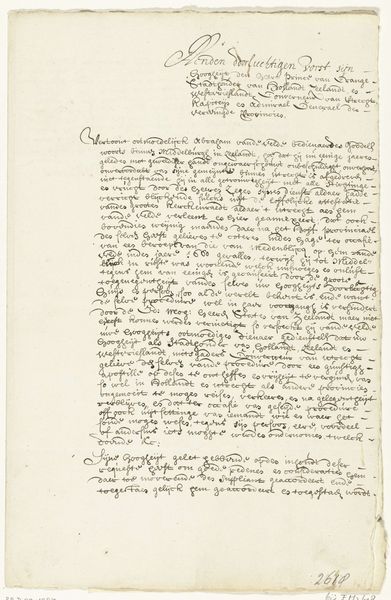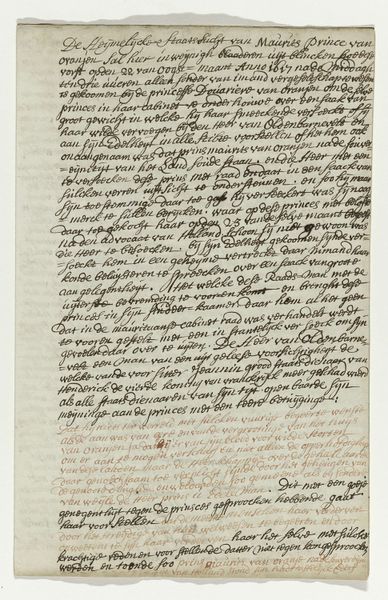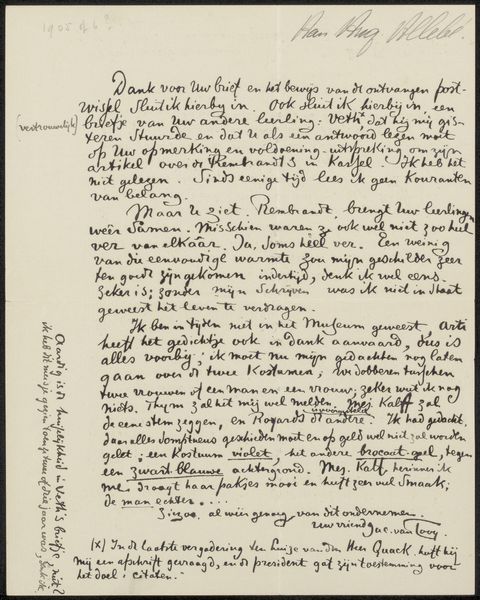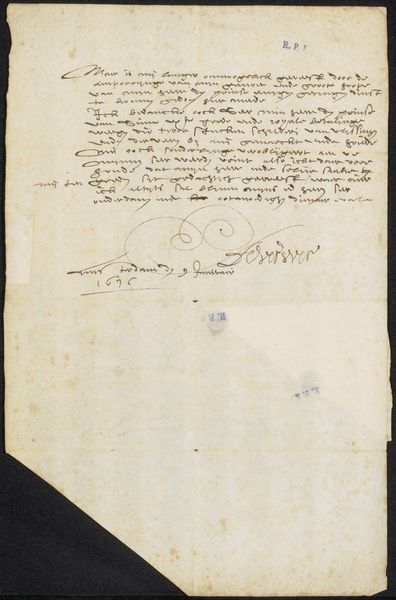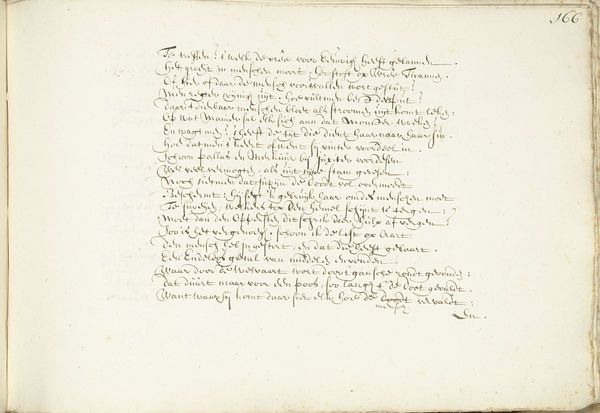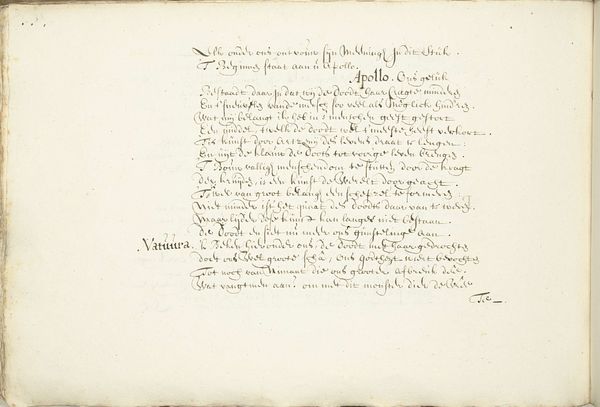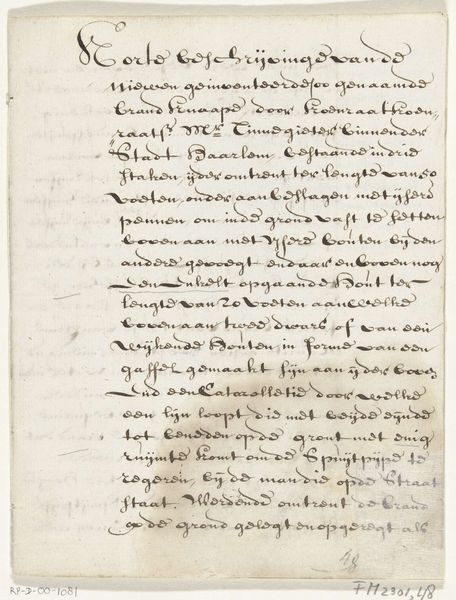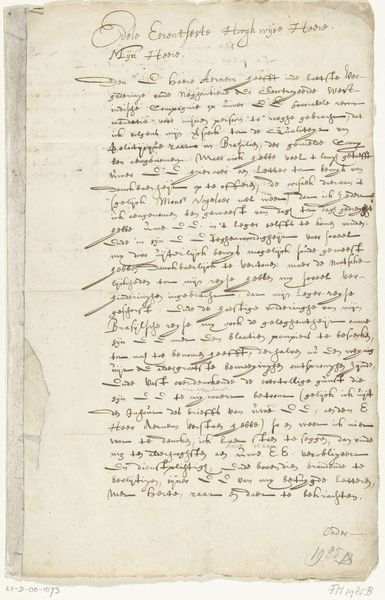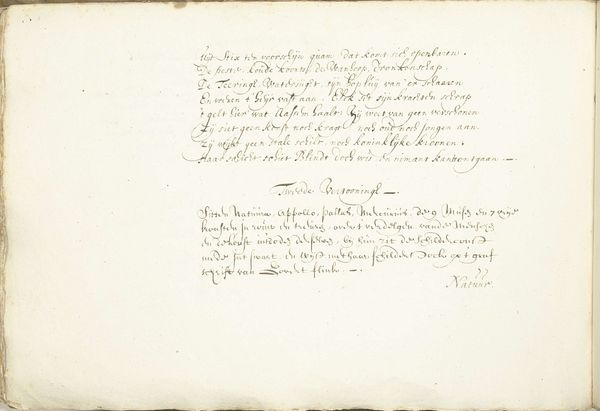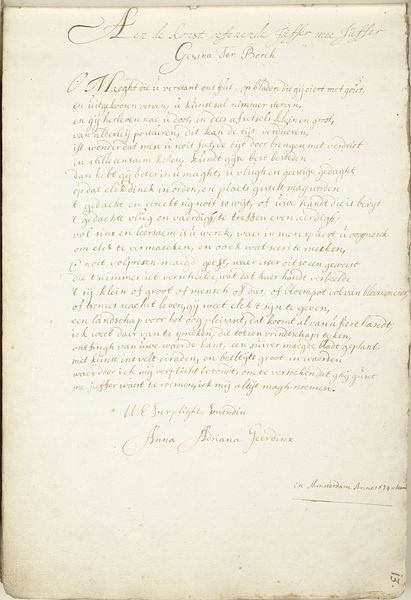
drawing, paper, ink, pen
#
drawing
#
comic strip sketch
#
medieval
#
hand-lettering
#
hand drawn type
#
hand lettering
#
paper
#
personal sketchbook
#
ink
#
hand-drawn typeface
#
pen-ink sketch
#
pen work
#
sketchbook drawing
#
pen
#
sketchbook art
#
calligraphy
Dimensions: height 265 mm, width 212 mm
Copyright: Rijks Museum: Open Domain
Curator: This facsimile of a letter by Floris van Egmond, made in the 19th century, presents an intriguing glimpse into historical communication methods. Editor: Yes, it's like peeking into someone's personal correspondence, although this being a later recreation kind of mutes the effect. It looks to be made from ink on paper with tight calligraphy. What significance might these choices of material hold for our understanding of the letter itself? Curator: The materials themselves – paper, pen, ink – are indicative of the labor and technology available at the time of the original letter, back in 1539. However, as a 19th-century copy, the materials also speak to that period’s interest in reproducing and consuming the past. The choice to recreate it by hand points to a desire to mimic the artisanal skills that mass printing threatened. Who was commissioning and consuming these facsimiles? What function did this kind of historic imitation serve for the patron? Editor: That's a great point. I hadn’t considered the copy itself as a product of its own time. Were there specific workshops or artisans who specialized in recreating historical documents? Curator: Exactly! Think about the economic structures and artistic skills involved in reproducing something like this on demand. Each stroke is an act of labor, mimicking another. This makes one consider who possessed such artisanal literacy and what socioeconomic role these people occupied in society? Was there a consumer base for them, like those fascinated by autographs? The commercialization of handwriting, interesting in our own age too! Editor: This reframing, from simply viewing the content of the letter to also considering the labour and social context behind both the original and the copy, really opens up a lot more questions! I thought I would consider simply whether the paper or the pen was period-appropriate, but now it goes further. Curator: Yes! Materiality isn't just about the "what," but about the "how," the "why," and, crucially, the "who" of artistic creation and consumption. Hopefully you agree it prompts questions related to the complex world of historical craft and social desire that surrounded Floris' letter across generations. Editor: Definitely, thank you, I see that now, you really gave a wider perspective on this seemingly simple piece.
Comments
No comments
Be the first to comment and join the conversation on the ultimate creative platform.
